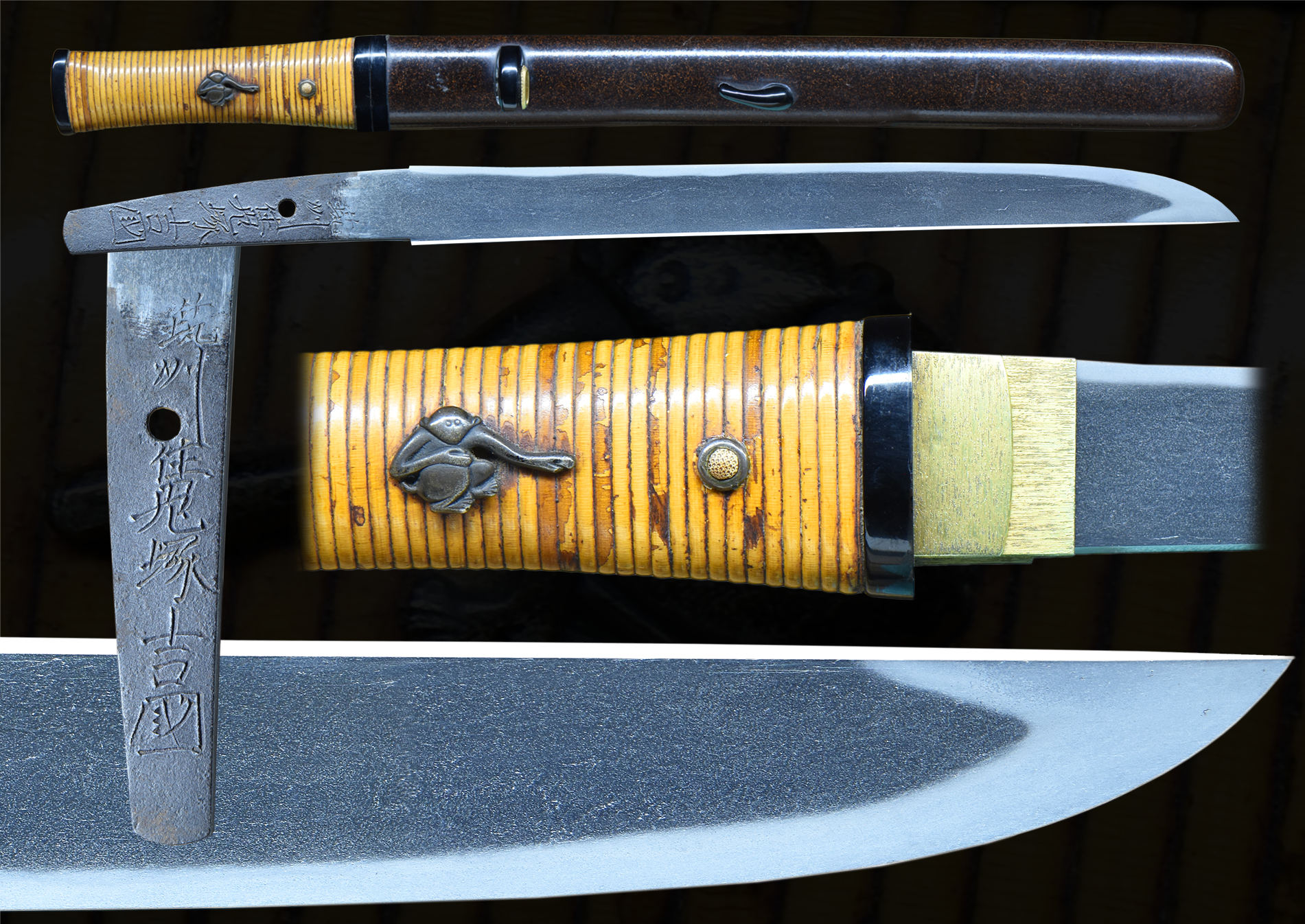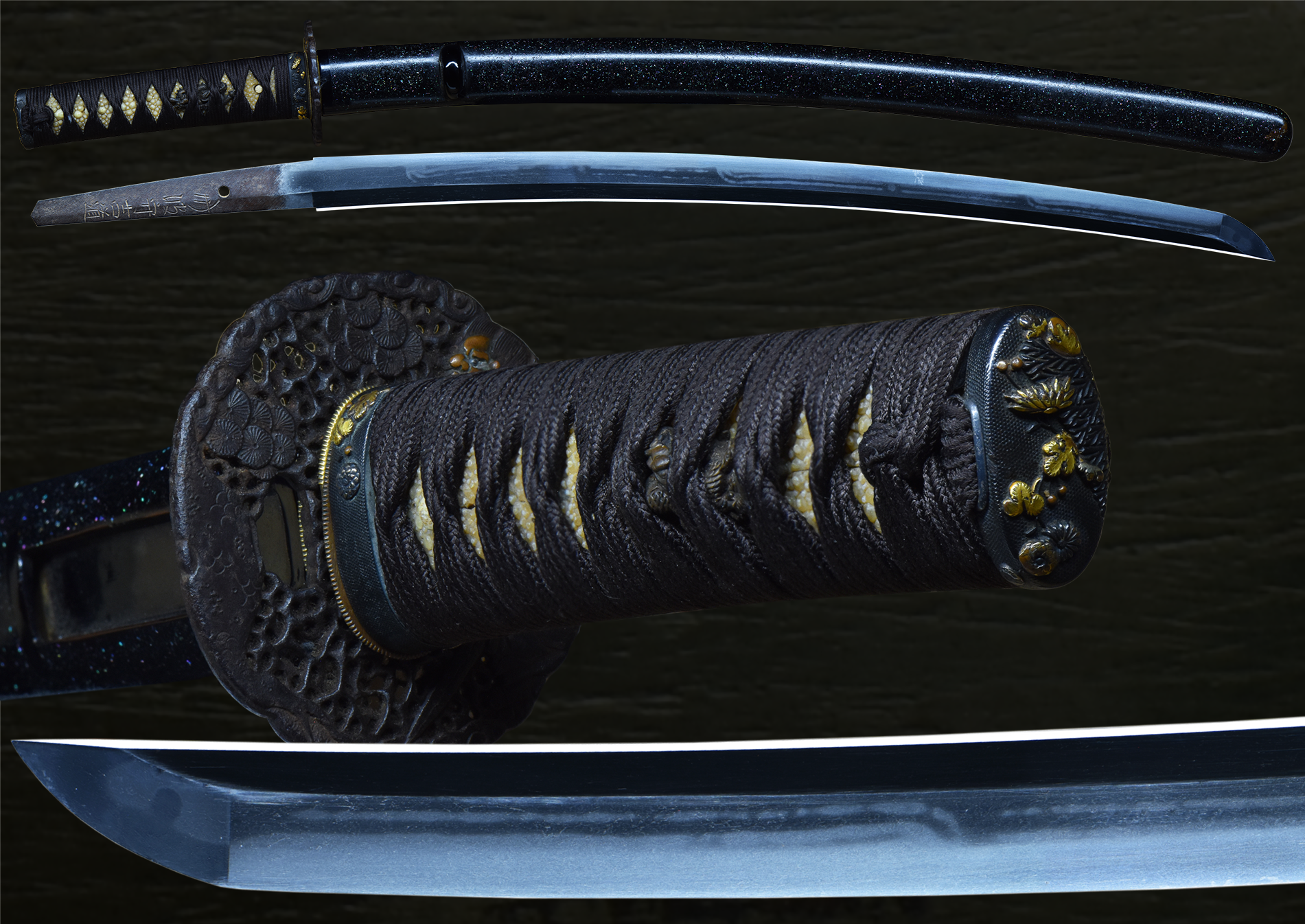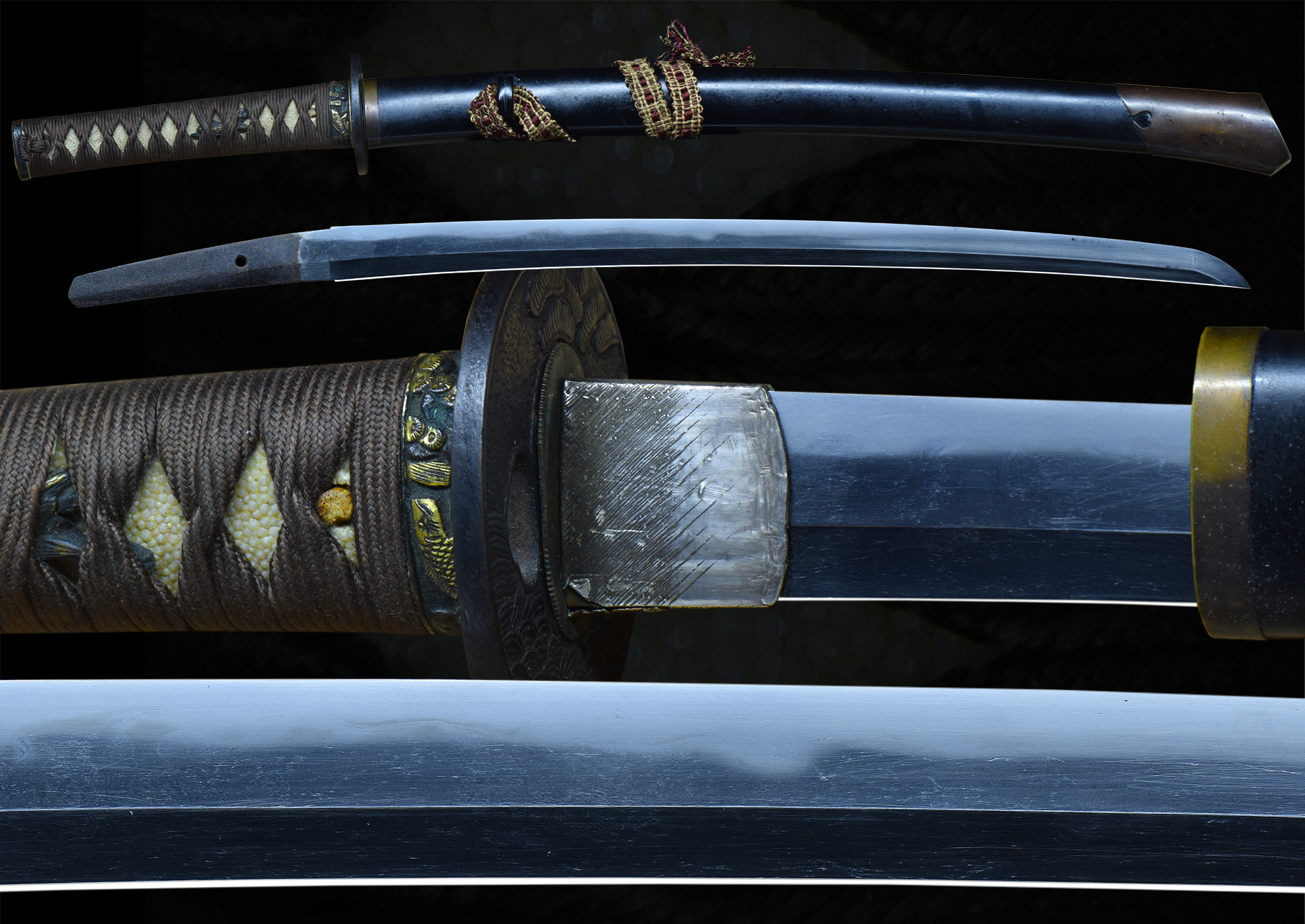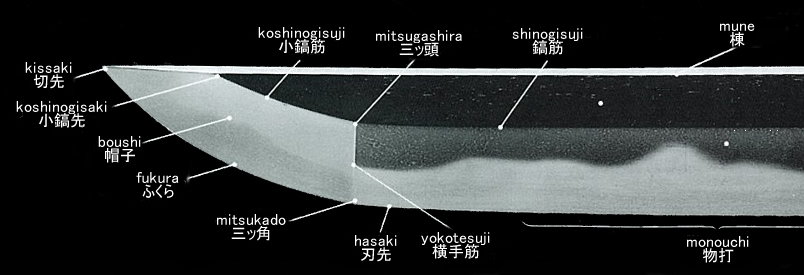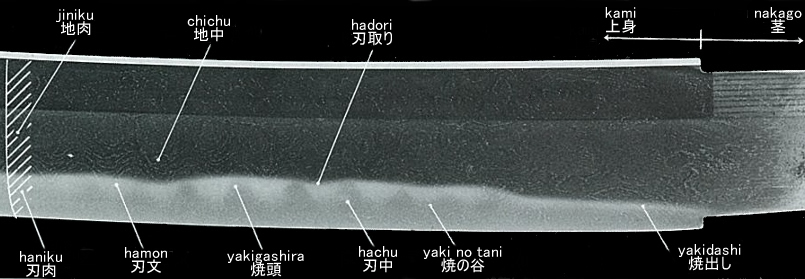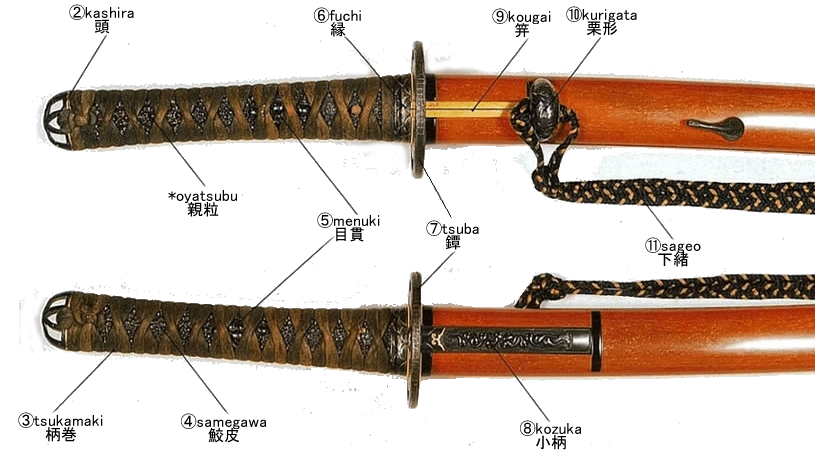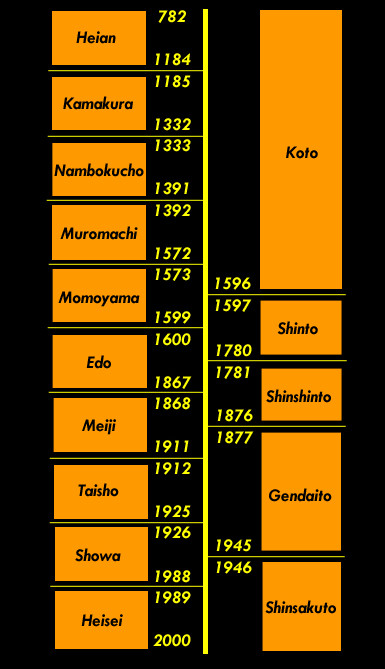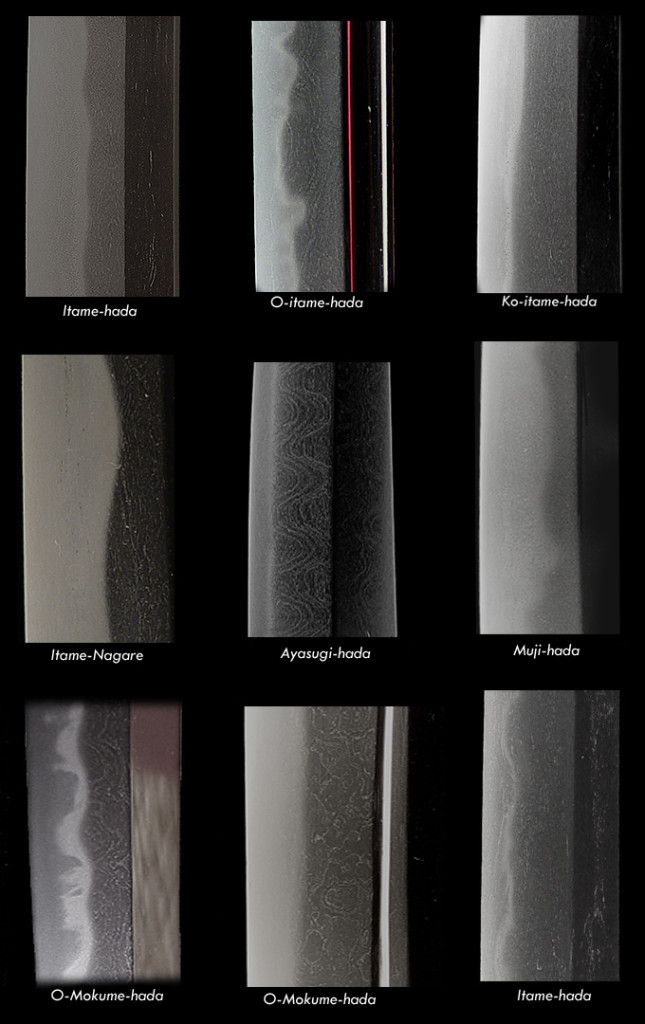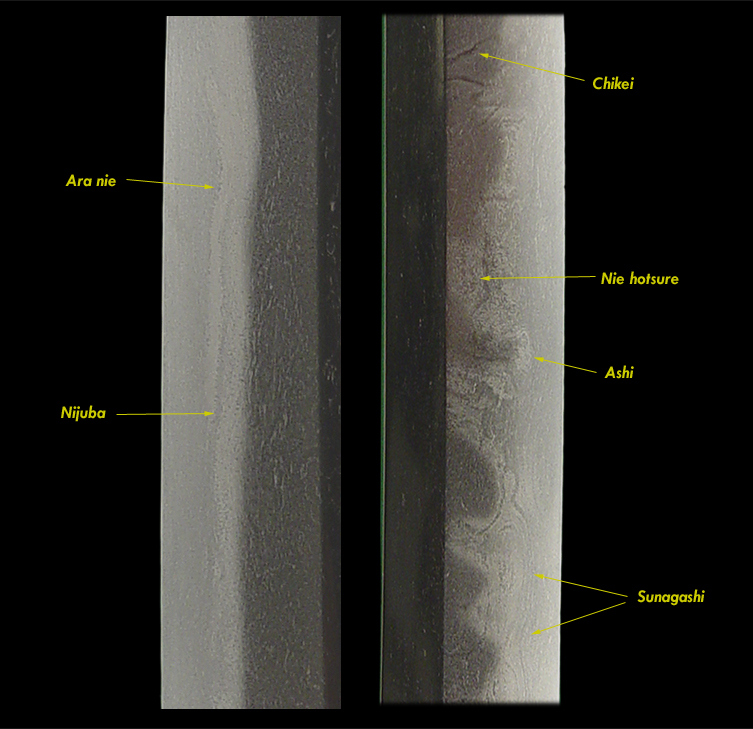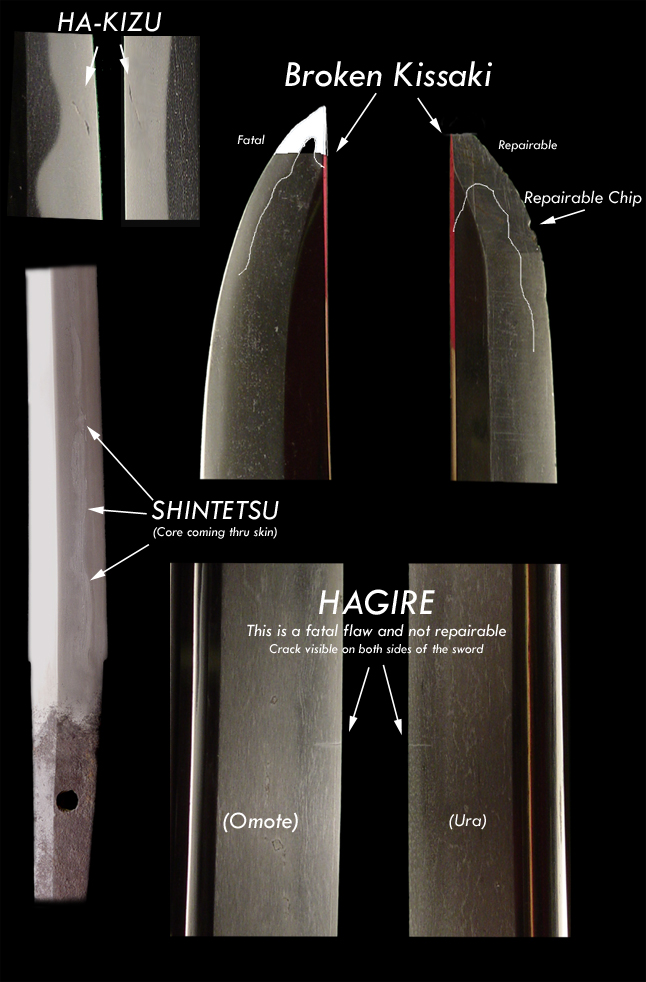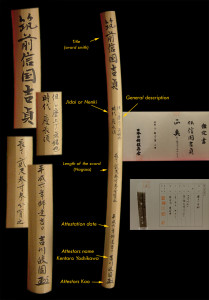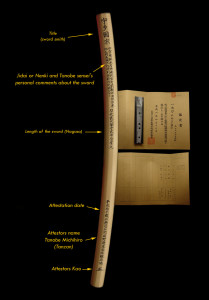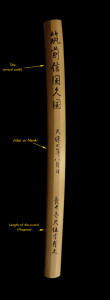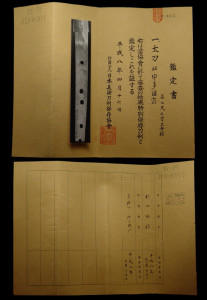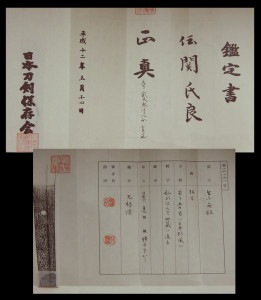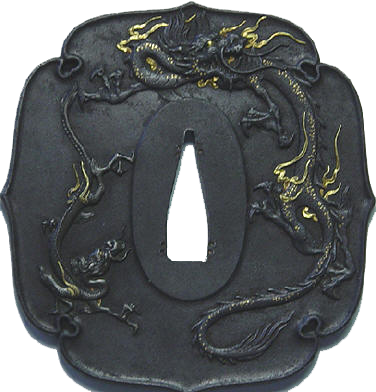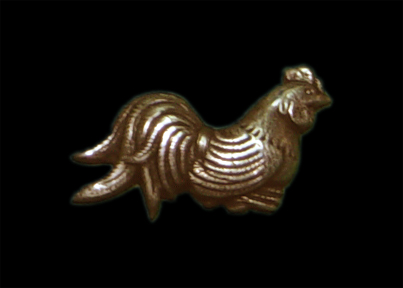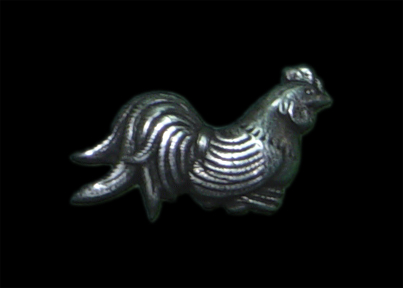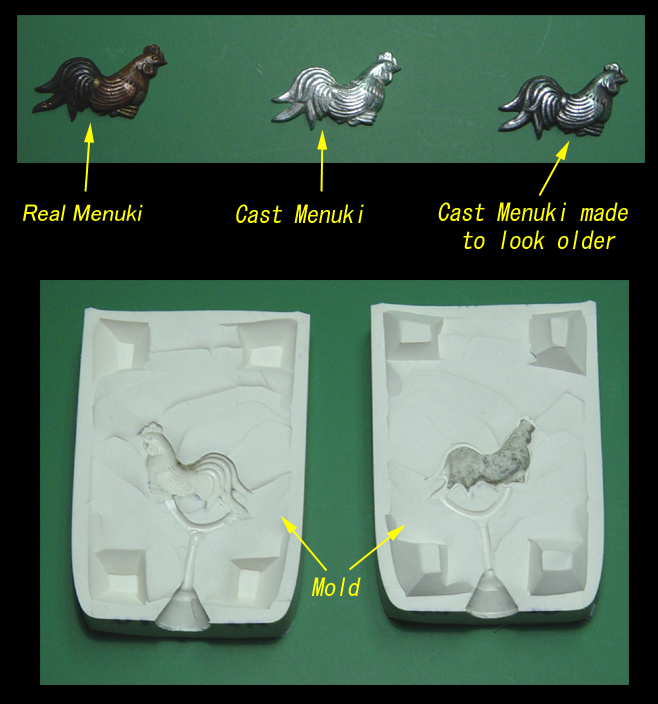Appraisal Information
Parts of the sword
These images were donated from a fine sword shop in Japan Ginza Choshuya Co.Ltd http://world.choshuya.co.jp
Sayagaki
Sayagaki is done primarily for identification. If you have many swords in shirasaya, it will be easier to find a particular sword if the Shirasaya has a Sayagaki on it.
Sayagaki is a very nice thing to have done to your Shirasaya after the sword has been polished and has gone thru Shinsa. Here are some examples of Sayagaki. The first is done by Kentaro Yoshikawa and the second one is done by Michihiro Tanobe. The last one is a Sayagaki done for identification purpose by my calligrapher.
Tsuba
By Jim Gilbert
To anyone who is not already a student of the Japanese sword and its related arts, I owe a few words of introduction. A tsuba is the hand guard mounted on a Japanese sword. It serves to keep the user’s hand from sliding up onto the blade of the sword, to counterbalance the weight of the blade, to communicate the social standing, beliefs and tastes of its owner, and, to some degree, to protect the hand from an opponent’s blade. Tsuba are made from a wide variety of materials including ‘soft metals’ such as copper and its alloys (shakudo, shibuichi, brass, bronze and others); silver, gold, leather, etc., but here I will focus mostly on iron.
In its simplest form a tsuba can be a plain, undecorated plate. Most however are embellished to some degree with surface texturing, cut-out openwork in positive and negative silhouette or inlay/overlay of various metals. The style of work varies with time, region and the imagination of the maker. Decorated or not, a good tsuba must first satisfy the basic demands of function. This tends to lend certain common characteristics to tsuba that can lead newcomers to think “These things are all alike. Why would anybody care about them other than to mount on a sword?” I know that I once did, but with a little bit of study I found there’s a wide world to explore. While I hope that this site can serve as road map for beginners, it is not a comprehensive study of tsuba, but rather is a reflection of my current interests.
For more information and examples of tsuba please have a look at Jim Gilbert’s very informative site.
Information on Tsuba ( by Jim Gilbert )
This is an example of a tsuba that has been in a fire, note the fire scale.
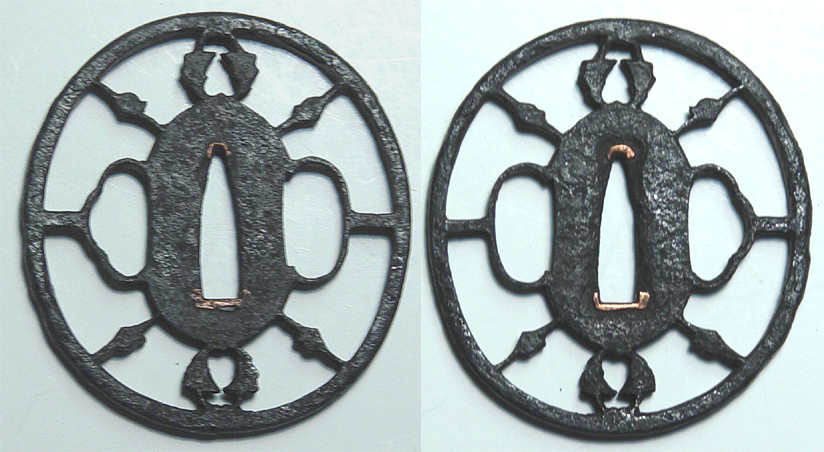
Step by Step Sageo Tying
Its easy to do!
<< Video Here >>
I hope that this is helpful in adding to the beauty of your swords!
The balance of a long sword
This handle has inlayed into the handle weight to compensate for the weight of a 32″ long shin-shinto katana.

Note the center of balance on this handle.

For Sale
